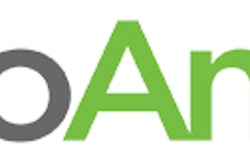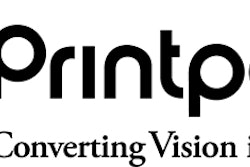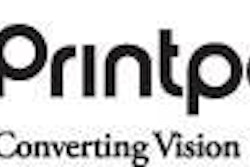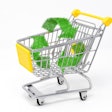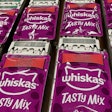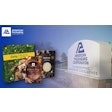
Pet food packaging has long been considered the front line of branding strategies — what more visible way, after all, to grab a potential customer’s attention than right on the shelf they’re shopping at? As telling a company’s story becomes more vital to gaining market share, packaging all over the segment is being refreshed to do more than simply sell the product in the bag, pouch or can. At the same time, a laser-like focus on sustainability has pet food companies challenging their packaging partners to do more with less: more story, more information and more convenience; less material, less space and less hassle.
Consumers lead the charge for more from pet food packaging
“Pet food is a hypercompetitive market,” said William Kuecker, vice president of marketing, North America, for multinational packaging and paper company Mondi Group. “Consumer trial is still primarily driven by consumers’ snap decisions at the point of retail sale, and packaging controls a high percentage of that first impression. Leading brands understand that and are working to grab the consumer's attention initially while using packaging features and components to maintain satisfaction through the use life. Brands seek to add to their packaging without compromising manufacturing efficiency or key performance metrics such as the freshness of the food inside and product toughness.”
It's a tall order these days, especially since the pandemic of the last 2.5 years has done its part in accelerating many of the trends all industries were already seeing but thought they had more time to get ahead of.
“We have seen the pandemic turbocharge trends that were already taking place,” said Susan Ellison, joint owner at United Kingdom-based packaging and labeling company OPM Group. “The main trend is packaging premiumization driven by millennials, who are increasingly choosing not to have children and are instead treating their pets as children. This ‘fur baby effect’ is still the dominant trend in pet food packaging backed by research from JWT Intelligence, which found that at least 90% of pet owners view pets as their children. It is unsurprising, then, that they are demanding pet food packaging with properties common in human food applications; i.e., tremendous variety, quality, convenience, ease of use and clear nutritional information. They demand these things from the food packaging they buy to feed their families, and pets are now part of the family.”
Sustainability is everywhere, all the time
It’s nearly impossible to read (or write) about any pet food segment right now without stumbling over the word “sustainability.” Once a trend itself, sustainability has become a call to action blanketing every single aspect of the pet food market.
“I would say that sustainability is by far one of the top trends, with a special focus on recyclability and the integration of post-consumer recycled (PCR) materials,” said Rudolph Schaich, market development manager for flexible and rigid packaging company Printpack Inc. “On the technology side, developing an appropriate recyclable portfolio for all pet food applications is a strong focus point, as well as the continuous development and integration of PCR films, where the chemically recycled materials seem to be a great solution to have in the mid-term. And not less important is the continuous effort to maintain a high service level for our customers while keeping up with the growing demand in the market. Maintaining a good control of our internal supply chain is key to providing [an] excellent customer experience.”
Sustainability isn’t a new focus at this point, but the demands on the consumer side are becoming increasingly complex, and packaging technologies are being stretched to the limits trying to meet those demands.
“We already noticed in 2021 a strong push toward sustainable packaging solutions in the pet food industry,” said Luca Carollo, business development manager for automation machinery manufacturing company Clevertech SPA. “Some of the biggest CPGs, including pet food manufacturers, are setting ambitious sustainability goals to make their product packaging 100% recyclable or reusable by 2025. The most innovative [packaging], and part of new generation of packaging, is the flexible material pouches, and here we have the fantastic innovation of retortable pouches in monolayer. The second packaging container largely used worldwide in pet food is the metal can, and we are all looking to a lot of investment in an aluminum can that is forever recyclable.”
Whether the final product needs to go in a bag, pouch, can or something else entirely, feeding into the circular economy model has become the goal.
“In terms of sustainability, consumers and expanding legislation continue to drive the pet industry toward packaging solutions that support the circular economy,” said Dave MacDonald, vice president of sales for flexible packaging solutions company ProAmpac. “Brands are seeking more recyclable paper and film packaging, packaging with post-consumer resin or renewable resin, and potentially compostable packaging options. Rigid replacement is also on the rise as it reduces overall packaging and virgin resin required, along with associated energy and emissions that come with using more packaging materials.”
The complex needs of the packaging industry in the wake of consumer demand has split the focus on packaging, leaving everyone with multiple challenges to address.
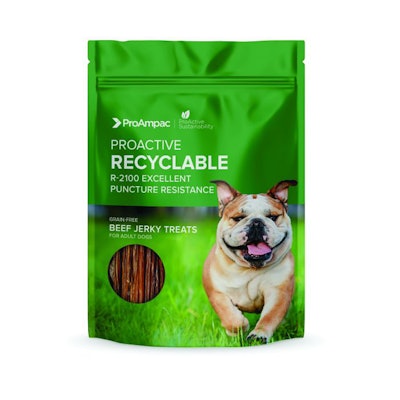
“While product protection and consumer needs drive focus on packaging development, the technology focus is on sustainable packaging and creating a circular economy for flexible packaging,” said Diana Courtepatte, director of marketing for Canada-based printing company TC Transcontinental. “Plastic flexible packaging provides unsurpassed advantages when it comes to providing ultimate product protection and freshness and includes consumer convenience. The goal is to find a sustainable end-of-life solution for plastic flexible packaging to ensure it does not become landfill waste. This is a challenge as it cannot sacrifice performance. Consumers are demanding responsible packaging, and brands have 2025 commitments for their packaging to be recyclable, reusable or contain recycled content.”
The current future of pet food packaging
While the world continues to change, there are some fairly safe bets when it comes to figuring out where pet food packaging needs to go.
“I think it’s safe to assume that most of us are in a different place in our sustainable efforts from where we were 10 or even five years ago,” said Thomas Morsheimer with reclosable flexible packaging innovations company Fresh-Lock and market development manager for Presto Products Company. “We’ve created targeted goals for circularity and sustainability, or we are in the process of making them. Many of those goals are targeted for completion as early as 2025, so the sense of urgency to achieve circularity by designing out waste is growing rapidly. In a perfect world, the recycling and reuse of packaging are recognized as the ideal scenario of circularity. Brands are embracing these goals on all fronts by actively working to reduce materials and move away from multi-material structures in exchange for mono-material options. Most recently, we are seeing pilot programs popping up at retail outlets that enable pet parents to purchase food for their pets using reusable packaging.”
Unsurprisingly, innovation is going to be key in being able to keep up.
“Balancing the evolving needs of pet food consumers with short- and long-term price volatility while adapting to extended producer responsibility (EPR) laws is difficult to do while maintaining a competitive price,” said Ellison. “Brands will want to make the most out of every inch of marketing real estate as a result.”
Fortunately, the industry seems to think packaging is up to the challenge(s).
“The pet food industry’s continuous growth has made it one of the most innovative markets in packaging,” said MacDonald. “Packaging suppliers are rising to the challenges of sustainability, e-commerce growth and complex nutrition packaging and are delivering novel solutions at an increasing rate.”
Expert opinion: Packaging focus in Europe



